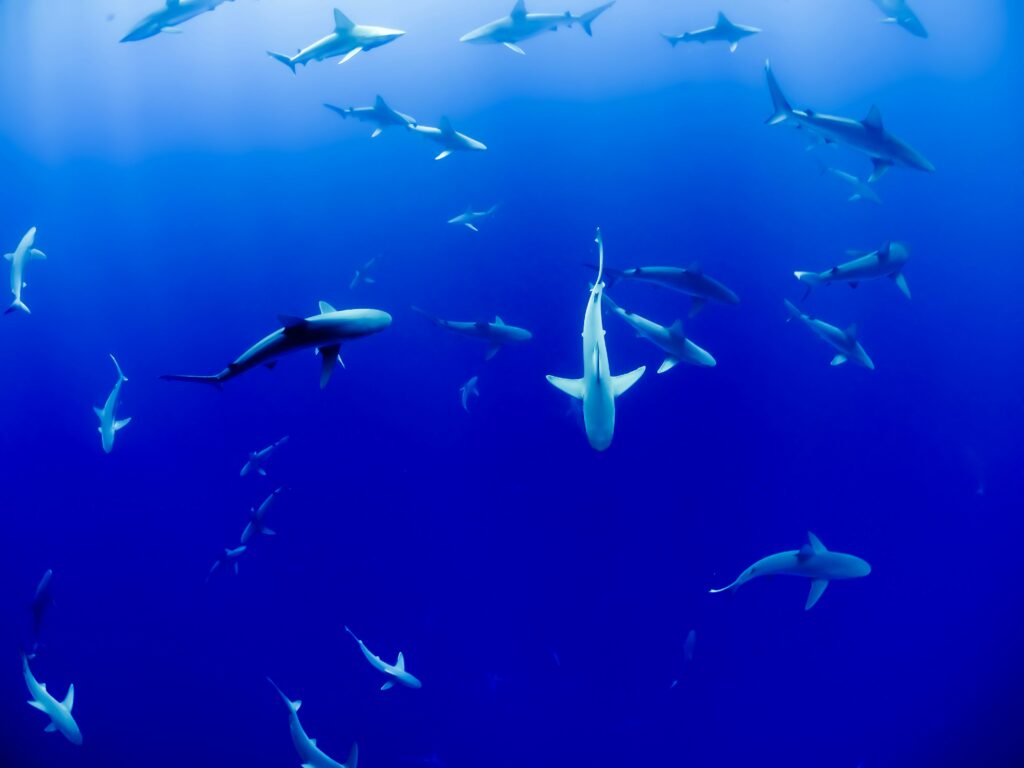
Photo by Jakob Owens on Unsplash
Maritime 5G and Marine Ecosystems
•5G Maritime is specifically designed for maritime environments like coastal areas, offshore platforms, ships, and other seafaring operations.
•Current implementations of 5G in marine contexts, such as in fisheries, tourism, and naval operations, might focus on economic and logistical benefits rather than studying ecological impacts. Balancing infrastructure development with conservation efforts is crucial to mitigate these impacts and sustain marine biodiversity.
Features of Maritime 5G
Depending on the providers, maritime 5G may include:
•5G-Advanced, also known as 5.5G: An enhancement to standard 5G for improved connectivity and efficiency.
•Hybrid Infrastructure: Combining terrestrial 5G infrastructure along coastlines with satellite-based systems to extend connectivity to open seas and remote areas.
•Massive device connectivity: Supporting IoT (Internet of Things) applications, including advanced setups utilizing higher frequencies for high-bandwidth activities near the shore, such as IoT-enabled smart ports and vessel tracking systems.
•Massive MIMO (Massive Multiple Input, Multiple Output): Enhancing beamforming and spatial multiplexing to improve network capacity, coverage, and energy efficiency.
•Spectrum Aggregation: Combining spectrum from different bands (e.g., low, mid, and high) including millimeter waves.
Maritime 5G Marketing Incentives
Maritime 5G is marketed as providing high-speed, low-latency connectivity to support diverse applications such as:
- Navigation, safety, and tourism.
- Environmental monitoring and efficient operation of maritime systems.
- Smart city and port promotion.
Green networking technologies, such as AI-driven energy management and base station sleep modes, are also promoted to reduce carbon footprints.
Possible Environmental Impacts of Maritime 5G
Coastal 5G developments require new antennas, upgrades and infrastructure. Higher frequency bands, such as millimeter waves, have limited water penetration but may interact with the ocean’s surface, potentially affecting small organisms like plankton. Although direct studies are lacking, these interactions could lead to ecosystem-level changes, warranting further investigation. Current guidelines largely ignore non-human species, emphasizing the need for targeted research to understand and mitigate potential risks.
•Noise Pollution
The integration of communication networks, including hybrid systems involving satellites, drones, and underwater equipment, contributes to noise pollution. This can disrupt marine species that rely on sound for navigation, communication, and mating.
•Light Pollution
Urban coastal development increasingly exposes marine ecosystems to artificial light. Coastal cities, offshore oil rigs, and ships flood the ocean with artificial light, impacting a wide range of sea creatures. From zooplankton to whales, light pollution disrupts natural rhythms and habitats. Specific impacts include:
- Disruption of feeding, mating, and camouflage behaviors in fish and marine organisms.
- Interference with natural light cycles essential for coral reefs and other organisms, leading to reduced survival rates.
A Look at the Marine Environment at Langebaan and Mossel Bay
5G maritime projects have been announced for these areas, providing a backdrop for evaluating potential ecological impacts alongside technological advancements.
South Africa’s coastline is home to over 13,000 marine species, many of which are protected within Marine Protected Areas (MPAs) on the West Coast. These include:
- Langebaan Lagoon: Known for its rich marine invertebrate fauna with over 400 species.
- Mossel Bay: A haven for marine life, including Southern Right Whales that calve in the bay. Other species frequently spotted include Humpback Whales, Killer Whales, and Bryde’s Whales. The area also supports Great White Sharks, various dolphin species, and a Cape Fur Seal colony of over 2,500 individuals on Seal Island.
Despite these natural riches, challenges persist. Whale strandings around Cape Town and injuries from ship strikes near Saldanha Bay and Cape Town’s ports highlight the urgent need for conservation. While the causes of these events vary, they underscore the necessity of protecting South Africa’s marine environment.
Protecting Marine Ecosystems
The Venice Declaration for Ocean Literacy in Action, endorsed at the 2024 Ocean Literacy World Conference in Venice, emphasizes the need for policies that respect the ocean’s inherent rights to exist, flourish, and regenerate. To achieve this, urban and coastal planning must adopt a participatory approach, engaging governments and stakeholders through Ocean Literacy programs tailored for municipalities, engineers, architects, local businesses, and residents. By prioritizing community-centered strategies, we can safeguard coastal and submerged natural and cultural heritage, ensuring that this invaluable legacy becomes a cornerstone of a more sustainable ocean future.
References
- 5G Promises to Transform Marine Industries
- Potential Use of 5G for Innovative Business Models
- ZTE, MTN, and Partners Launch 5G Marine Project
- Digital Solutions for Ports: Private 5G Connectivity
- Brzozek, C., Mate, R., Bhatt, C. R., Loughran, S., Wood, A. W., & Karipidis, K. (2024). Investigating the impact of anthropogenic radiofrequency electromagnetic fields on animals and plants in the environment: analysis from a systematic map. International Journal of Environmental Studies, 81(5), 2343–2358. https://doi.org/10.1080/00207233.2024.2375861
- Levitt BB, Lai HC, Manville AM 2nd. Low-level EMF effects on wildlife and plants: What research tells us about an ecosystem approach. Front Public Health. 2022 Nov 25;10:1000840. doi: 10.3389/fpubh.2022.1000840.
- Urban Light Pollution is a Danger for Marine Ecosystems
- From the Beach to the Seafloor, Light Pollution Interferes with Marine Life
- Maritime Traffic Around South Africa Rises Dramatically
- Three Stranded Whales Die Off Cape Town Coast
- Marine Protected Areas: Conserving Marine Life in South African Seas
- Marine Protected Areas: West Coast National Park
- Marine Life Around Mossel Bay
- Drowned Out: Why Whale Beachings Are On The Rise
- The Venice Declaration for Ocean Literacy in Action
